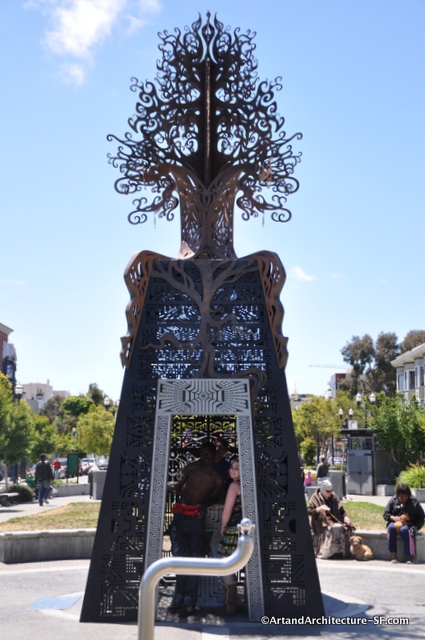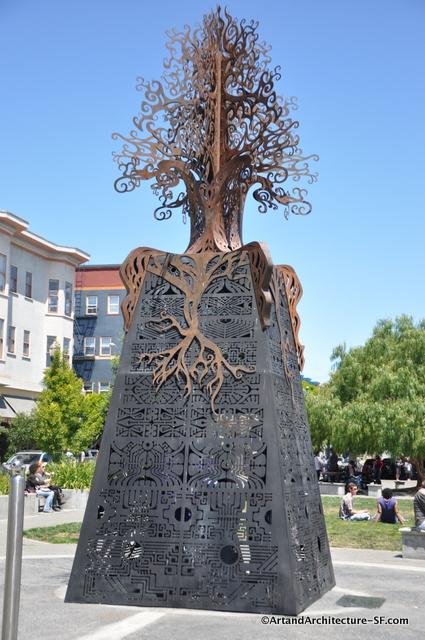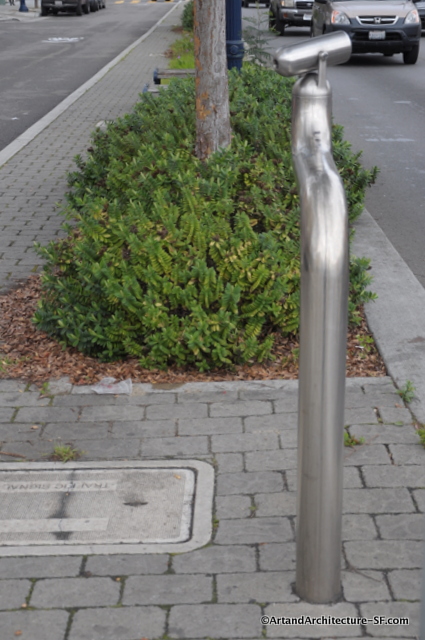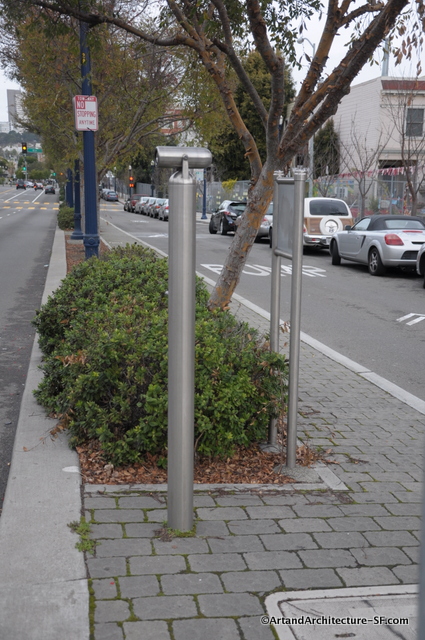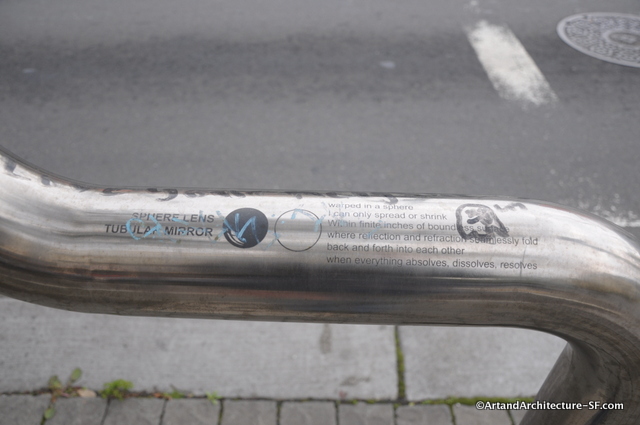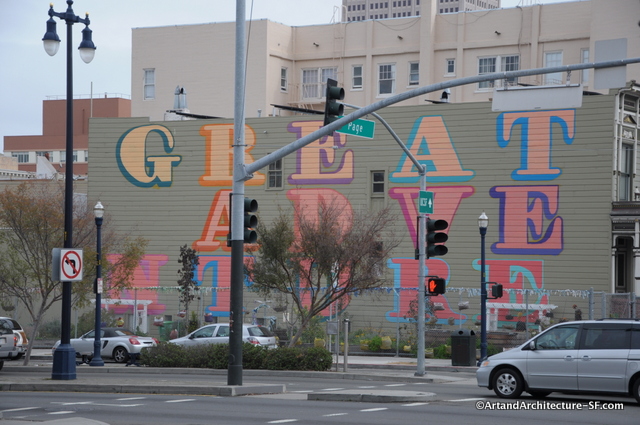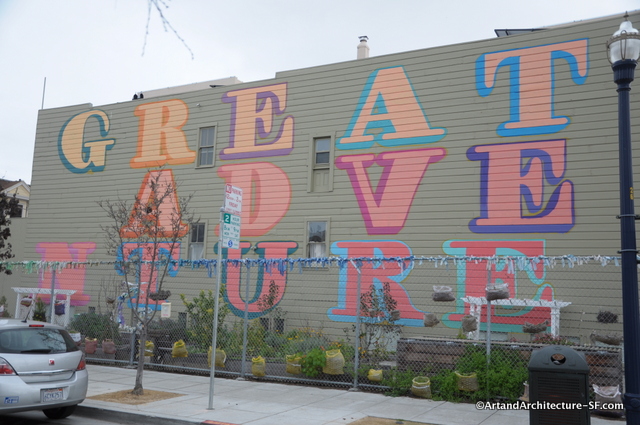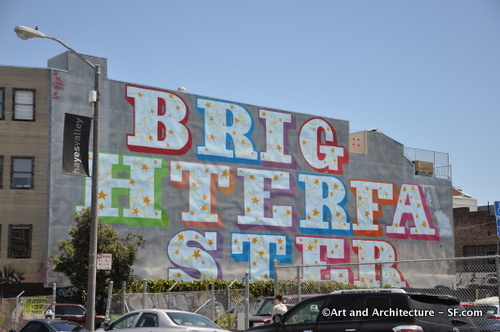The Hayes Valley Art Coalition explains the piece like this:
Futures Past is a sculptural environment of two contrasting worlds. The 12-foot pyramid reflects the architectural temples of the renowned collapsed civilization of the Maya. The tree honors the jungle ruins of Ta Prohm in Angkor, Cambodia. Together they illustrate a cautionary tale for our modern world and our digital gods, with an interior alter that holds a black sand hourglass that marks the passing of an era of unbridled over consumption and pollution. It’s purpose is to foster an awareness of the effects of our actions in the present moment: our future’s past is now.
The laser-cut welded steel sculpture reaches 24 feed in height and weighs 7,000 pounds. The pyramid welcomes explores inside at the ground level but is not climbable.
This is how the author Kate Raudenbush explains her piece.
Future’s Past was commissioned by the Burning Man event in August 2010 in the Nevada desert. The theme this year was “Metropolis: The Life of Cities”. I chose to address the concept of modern development by creating a cautionary tale of collapse. Future’s Past is a modern ruin, an architectural artifact found in the future. Once built as a monument to technological progress, this pyramid of system circuitry has been abandoned through unchecked consumptive collapse, but reclaimed by the resilience of natural forces, and evolved consciousness, symbolically represented by the roots of a sacred Bodhi tree, a symbol of Siddhartha’s seat of enlightenment, and our own.
She describes herself: Kate Raudenbush is a New York City based artist who creates allegorical environments as a form of social dialogue. Mixing visual symbolism cross-culturally within human history and mythology, geometry and architecture, her art finds inspiration within the micro and macro viewpoints of our natural and manufactured worlds. She utilizes welded and laser-cut metal, acrylic, mirror, sound and light to shape her designs into climbable, enveloping environments and sacred spaces that are given more meaning with each visitor’s participation. In this way, the artwork is not just an object to behold, but also an experience to be lived.
The chrome post that is sitting in front of this piece is a Ghinlon/Transcope by Po Shu Wang that you can read about here.

